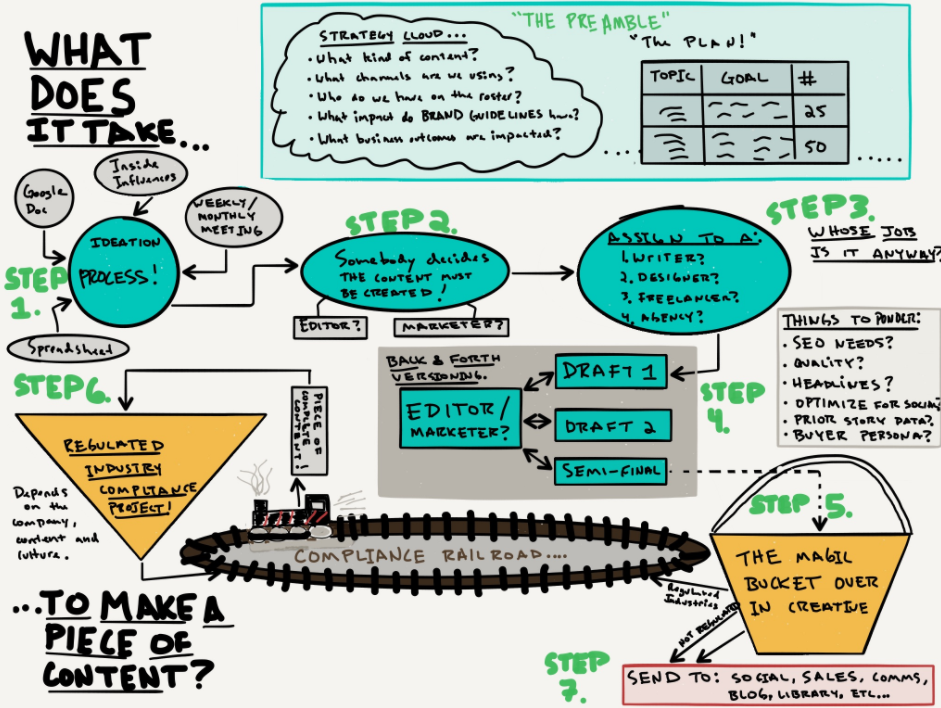Brands
How Content Marketing Technology Can Solve Your Sales Enablement Woes
This story is part of Contently’s Accountable Content Series, a collection of articles, webinars, case studies, and events we’ve designed to help marketers deliver measurable brand impact and business outcomes with content. To see more content in this series, click here.
Stop me if you’ve heard this one before: Marketing and sales, despite working toward a common revenue goal, struggle to align. Marketing brings in the leads, but sales doesn’t like them. Sales sells the product, but marketing doesn’t like how they sell it.
Molly Soat, editor-in-chief at the American Marketing Association, puts it best: “Aligning sales and marketing teams is a problem as old as the corporate structure.”
As a B2B software company, Contently is not immune to this challenge. We believed our content was a valuable sales enablement tool, and we had regular communication with the sales team. But there was room for our process to improve. Our communication mostly consisted of informal meetings, where details could get lost in translation. Plus, we needed more visibility throughout the content production and sales distribution processes.
To shore up the alignment between teams, we decided to test out a solution. Why not use our software to run a sales enablement publication? We had the technology to create a new internal operation only accessible to the sales and marketing teams. So, in a matter of 15 minutes, we did. Here’s how it worked.
Formalizing an informal process
After we added the sales and marketing team members to our new “Sales Enablement” publication, we set guidelines to ensure communication was simple and clear.
Below you can see the way we formatted guidelines for the sales team to submit asset requests. In addition to including the creative concept, we had each sales rep record their names, title, the intended audience, and the asset type.

In the past, this process was largely unstructured. A salesperson might make a passing request for a deck, but without documented details, the execution would often break down.
By formalizing the process, the sales team really had to think and be explicit about the value of each request. It also ensured that we could produce exactly what they wanted, rather than just taking an educated guess that would have to go through multiple iterations.
Improved visibility
Without our platform, identifying sales enablement gaps was a guessing game. Maybe someone felt like we were missing one-sheeters, but there was no of way of backing up that intuition.
However, once the sales team pitched story ideas and asset requests through the platform, the marketing team gathered a concrete understanding of what was missing (and what wasn’t). We could see which type of assets were in demand, what types of prospects needed more content support, and so on. As a secondary benefit, when sales reps pitched topics that already existed, the feature helped us understand which assets were hard to find.

Finally, after assets were distributed to the sales team, we could turn to Contently Analytics to see which content was most effective.
From hieroglyphics to art
Overall, this new process brought structure to our cross-department collaboration. The platform provided a place for us to document our content plans and tie them to production with deadlines, workflows, and a spot on our editorial calendar. Additionally, linking production back to analytics gave us a comprehensive view of the marketing-sales content engine.
In other words, technology helped us achieve the seemingly impossible feat of alignment between marketing and sales. Over the first few months the publication was active, salespeople asked for specific case studies, internal on-boarding documents, and competitive analysis.
In one case, a senior sales executive pitched an infographic that would demonstrate how brands worked with Contently from strategy to distribution. In his pitch, he included a sketch from his tablet:

The design team used the sketch as a springboard for the visual concept, and our content team expanded on his text. His pitch was an extremely helpful guide for this project, giving us a clear foundation that led to the final version of the infographic. Since it was published in late April, the graphic has been one of our top-performing pieces of content, attracting over 4,000 readers and 11,000 minutes of attention time.
Technology helped us achieve the seemingly impossible feat of alignment between marketing and sales.
Since the sales enablement publication has only been around for a few months, there’s still room for more collaboration. For instance, salespeople could fill out monthly requests for a sales enablement series. We could send an analytics report of the sales enablement content to the sales team once a quarter so they stay on top of asset performance. But we’ve already seen the value of aligning marketing and sales through technology.
Marketing and sales are going to have overlapping goals—but when they’re on the same page for how to achieve those goals, both sides are happier. Engagement increases, deals move through the funnel at a faster rate, and marketers and salespeople can work more efficiently and effectively.
Image by Andy Roberts / GettyGet better at your job right now.
Read our monthly newsletter to master content marketing. It’s made for marketers, creators, and everyone in between.




